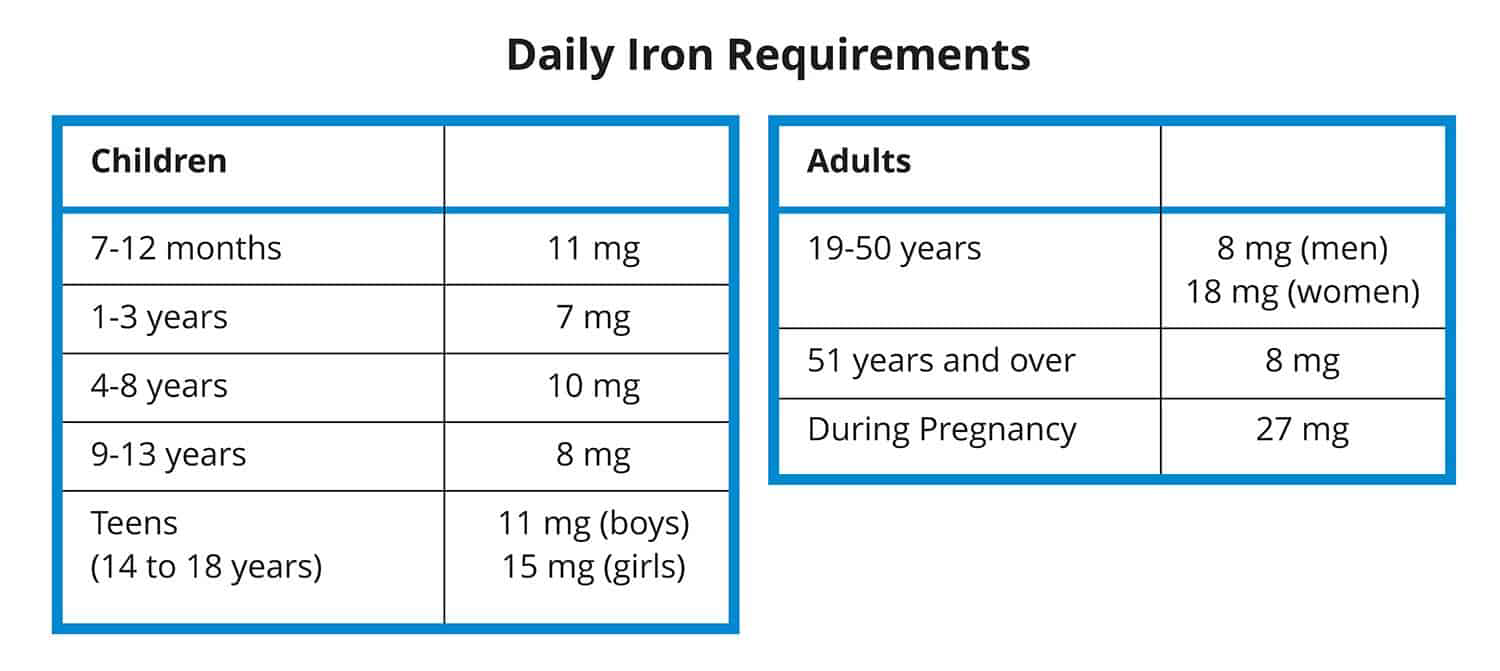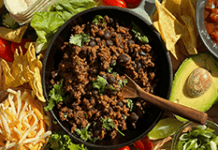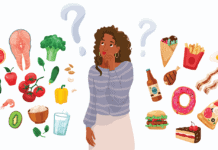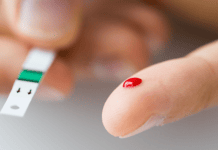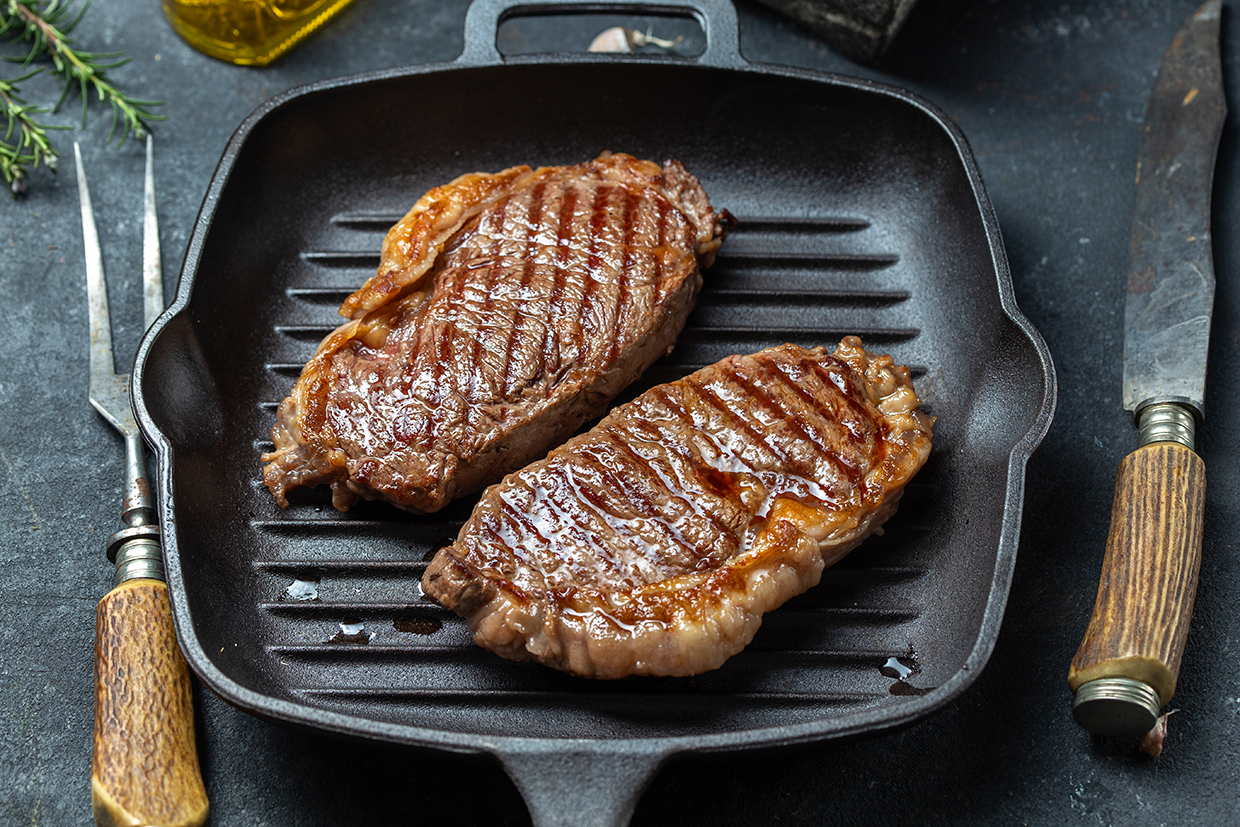
Rates of iron deficiency are even higher than previously thought, according to Health Canada research published earlier this year. It’s estimated approximately one in four teenage girls and adult women (19-50 years old) are iron deficient.1
If you’re concerned that you or another family member may not be getting enough iron, eating iron-rich foods daily should be a top priority and using cast iron cookware is another strategy that can help.This popular type of cookware adds a little iron to foods as you prepare them, making it an easy and affordable way to boost your family’s iron level.
What is cast iron cookware?
Cast iron cookware is made with iron and carbon, and sometimes other ingredients, depending on the manufacturer.
Cast iron cookware comes in many shapes and sizes, from skillets and pans to griddles, dutch ovens, bakeware and even woks. Cast iron cookware is heavier than steel or stainless steel, but many home cooks like cast iron because it’s durable, and it retains heat well.
How much iron does cast iron cooking provide?
While one study found that 90% of foods cooked in cast iron had more iron2, it also found that the amount of iron that cast iron cookware adds to food will vary depending on:
- acidity,
- moisture and
- cooking time.
The researchers cooked 20 kinds of foods in cast iron and non-iron cookware, and they found that acidic foods with high moisture content, such as applesauce and spaghetti sauce, absorbed the most iron. Using cast iron cookware increased the iron in applesauce by 7 mg, and spaghetti sauce had 3 to 5 mg more iron. Scrambled eggs gained 3 mg of iron.
The iron content of dry foods that are not acidic also increased but in smaller amounts: 1 mg for pancakes and 1.5 mg for fried eggs.
Foods cooked longer absorbed more iron, too. Beef stew, already an iron-rich food, had 2.8 mg more iron after cooking.
Another study found similar results, and this was still true after using the cast iron cookware 50 times.3
Good to know: Cast iron cooking adds non-heme iron to the foods you are cooking. This is the same type of iron found in eggs and plant sources like spinach, enriched pasta or lentils. Non-heme iron is less well absorbed by the body (2%–20%) than heme iron (15%–35%)4, the type of iron in beef, fish and poultry.
How much iron do we need?
We all need adequate iron for optimal health. Women, especially, need to pay attention to their iron intake, as we need 18 mg daily. During pregnancy, that rises to 27 mg—iron is vital for a baby’s development. Here’s how much iron we need at different life stages:
Is it safe to use cast iron pans?
Yes, it’s safe to cook with cast iron. When you cook with cast iron, the cookware adds just a small amount of non-heme iron to the food. Over time, this can help to meet iron requirements.
Good to know: If you are eating a mixed diet that includes good sources of well absorbed heme iron like meat and have good iron stores, you may not want to use iron cookware for all your cooking, to reduce the risk of getting too much iron.
5 more ways to get enough iron from food
The findings of the research mentioned above are promising, but we shouldn’t rely solely on cast iron cookware to meet our iron needs. It’s just one tool in the toolbox, and what matters most is what we eat. In fact, recent Canadian research shows that more frequent red meat consumption is the only dietary factor associated with better iron status in women.5
Here are other ways to boost your iron intake:
- Eat a variety of iron-rich foods from both animal and plant sources every day.
- Prioritize foods with sources of well-absorbed heme iron (meat, poultry, seafood).
- Boost the non-heme iron you absorb from plant sources by 150% by pairing them with meat, poultry and seafood.6
- Boost the amount of non-heme iron you absorb from plant sources by adding vitamin-C-rich foods to the same meal (broccoli, red peppers, citrus fruits, potatoes, tomatoes).7
- To increase the amount of iron your body absorbs from a meal, wait one to two hours before drinking tea or coffee or taking calcium supplements.8
- Prepare foods in cast-iron cookware. You’ll get the most iron from moist, acidic foods cooked slowly, such as chili, stew and spaghetti sauce.
Learn more about dietary iron.
By Carol Harrison, RD

References
-
Cooper M, Bertinato J, Ennis JK et al. Population Iron Status in Canada: Results from the Canadian Health Measures Survey 2012-2019. J Nutr. 2023 May;153(5):1534–43. doi: 10.1016/j.tjnut.2023.03.012. Epub 2023 Mar 12. PMID: 36918146. https://pubmed.ncbi.nlm.nih.gov/36918146/
-
Brittin HC, Nossaman CE. Iron content of food cooked in iron utensils. J Am Diet Assoc. 1986 Jul;86(7):897–901. PMID: 3722654. https://pubmed.ncbi.nlm.nih.gov/3722654/
-
Cheng YJ, Brittin HC. Iron in food: effect of continued use of iron cookware. J Food Sci. 1991;56(2):584–5. https://doi.org/10.1111/j.1365-2621.1991.tb05331.x. https://ift.onlinelibrary.wiley.com/doi/10.1111/j.1365-2621.1991.tb05331.x
-
Monsen ER. Iron nutrition and absorption: dietary factors which impact iron bioavailability. J Am Diet Assoc. 1988 Jul;88(7):786–90. PMID: 3290310. https://pubmed.ncbi.nlm.nih.gov/3290310/
-
Chang VC, Cotterchio M, Kotsopoulos J et al. Iron Status and Associated Factors among Canadian Women: Results from the Canadian Health Measures Survey. J Nutr. 2023 Mar;153(3):781–97. doi: 10.1016/j.tjnut.2022.10.011. Epub 2022 Dec 20. PMID: 36788041. https://pubmed.ncbi.nlm.nih.gov/36788041/
-
Engelmann MD, Davidsson L, Sandström B et al. The influence of meat on nonheme iron absorption in infants. Pediatr Res. 1998 Jun;43(6):768–73. doi: 10.1203/00006450-199806000-00009. PMID: 9621986. https://pubmed.ncbi.nlm.nih.gov/9621986/
-
Piskin E, Cianciosi D, Gulec S et al. Iron Absorption: Factors, Limitations, and Improvement Methods. ACS Omega. 2022 Jun 10;7(24):20441–56. doi: 10.1021/acsomega.2c01833. PMID: 35755397; PMCID: PMC9219084. https://www.ncbi.nlm.nih.gov/pmc/articles/PMC9219084/
-
Health Canada. Iron. May 2022. https://www.canada.ca/en/health-canada/services/nutrients/iron.html

